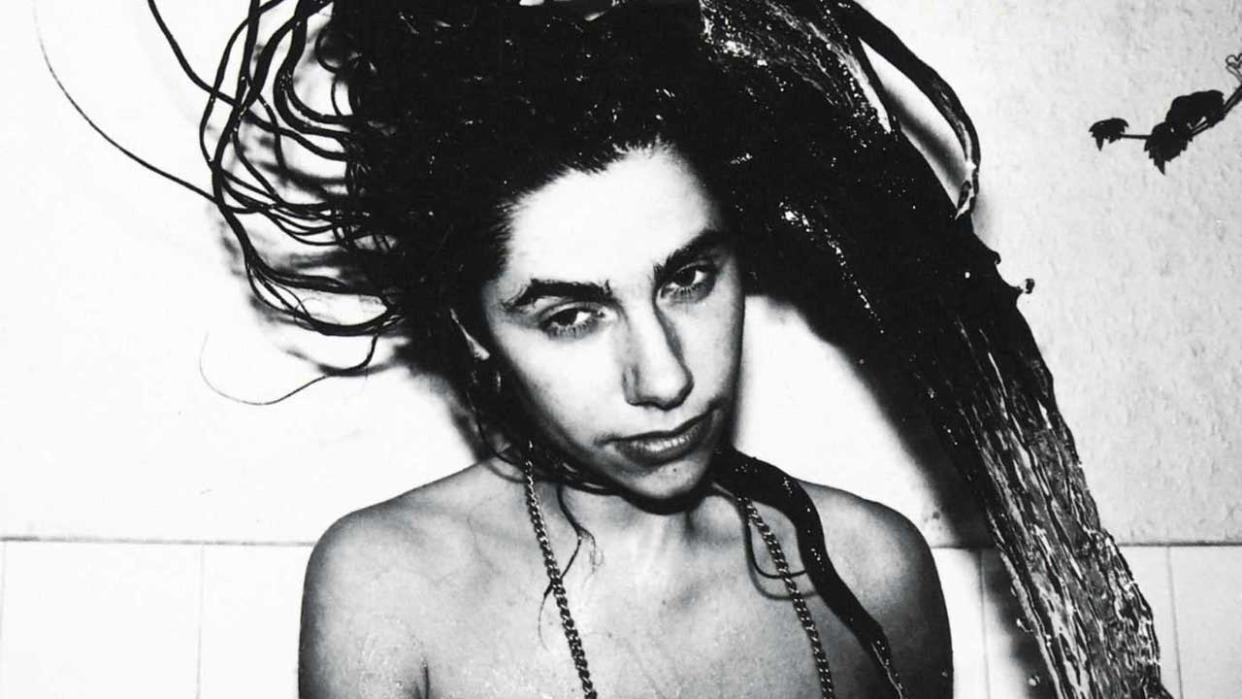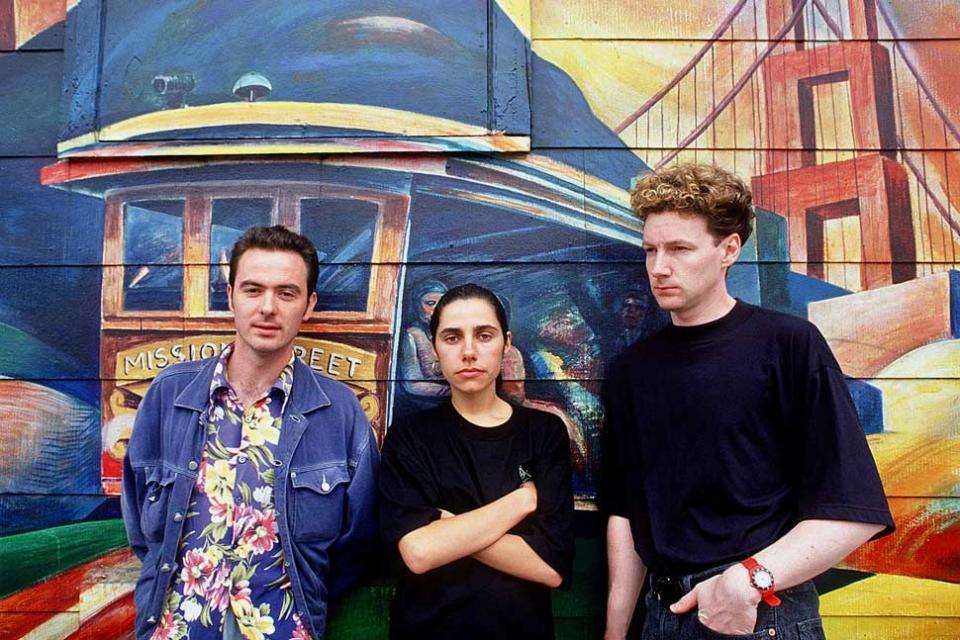How PJ Harvey’s raw, violent, vengeful masterpiece Rid Of Me inspired Nirvana and set hearts ablaze among a new generation of fearless female musicians

It takes a strong sense of self for an artist to remain absolutely steadfast in pursuing their own unique vision during the first flush of fame, when unasked-for opinions come in thick and fast. In 1993, Polly Jean Harvey was riding high on the success of her superb debut album, Dry, its raw punk blues, searing alt rock musicianship and unflinching poetry – sometimes blackly humourous, often seething with anger and vengeance, always clear-eyed in its honest, unvarnished, romance-free exploration of its creator’s complex psyche – immediately positioning her as one of the UK’s most interesting new voices. Having released Dry on indie label Too Pure, when the majors came knocking hungry for a follow-up with just as much drama, intrigue and emotion, at first she resisted the idea, concerned she might lose some of the artistic control she treasured so much.
It was an unfounded worry – an entire boardroom of bigwigs couldn’t get Harvey to veer off course. She ended up plumping for Island, who wanted a ‘name’ producer on hand to soften her sound and make it more accessible. Harvey refused, demanding instead to work with incorruptible underground icon Steve Albini – a man who doesn’t even accept the title of producer, preferring instead to be known as a recording engineer – who had previously captured alt.rock lightning in a bottle with Pixies, The Jesus Lizard, The Breeders, Slint and more.
The label would discover that Harvey’s singular vision extended to Rid Of Me’s cover art. Rather than opting for full hair and make-up in a professional studio, Harvey sent the label a packet of photos taken by her friend Maria Mochnacz, in the bathroom of the photographer’s small Bristol flat. In them, a topless Harvey swings her sopping wet hair through the air, lit only by the camera’s flash. “This is the real me,” is seems to say, “take it or leave it.”
She was, of course, right on both counts. The black and white image was an instant classic, making the album cover every bit as arresting as Patti Smith’s Horses, a musician she was often compared to in the earliest days, and certainly an inspiration. It was a perfect match for the stark music within, and for Albini’s famously light touch at the mixing desk. Completed in just two weeks at Pachyderm Recording Studio in rural Minnesota in December 1992, it’s stripped back to the bare bones and gristle, a stark barrage of riffs and drums acting as the jagged, uncomfortable bedrock on which Harvey lays bare her soul, a fittingly bleak canvas for her whispered, pagan oaths and anguished howls.

And make no mistake, there is pain writ large here – this is blues in the real sense, a scream from the soul that all those American Delta greats harnessed so beautifully. While its predecessor had plenty of moments of tongue-in-cheek levity, not least on the gleefully, wildly rude Sheela-Na-Gig, Rid Of Me was written as Harvey dealt with the unravelling of her first proper relationship, as well as dealing with a sense of being uprooted from her beloved Dorset countryside home having moved to London. But, a born storyteller, it’s not all autobiographical – she embodies characters both male and female, human and animal, mythical and flesh-and-blood.
From a hushed start, the minimalist production allows the drama to build and brood, Harvey panting and warning that she’s not about to go quietly into the night as she scratches through the ashes of a burnt-out love affair – when she vows to twist off heads, you absolutely believe that she’s capable of it, the venom and vengeance written with Biblical intensity. “You were going to be my life…” she howls animalistically on Legs, as pained, fearful and threatening as a fanged creature caught in a snare. “I might as well be dead, but I could kill you instead.” And has there ever been a more withering, belittling, emasculating put-down than “You leave me dry”, as weaponised so ruthlessly and perfectly on the song Dry, originally intended for her debut? The sense of danger from the person who has us so artistically enthralled is chillingly thrilling.
Despite all the darkness, though, there are moments of joy to be found. A tumbling cover of Bob Dylan’s Highway ’61 Revisited brings punk to the door of the blues, while Me-Jane, with its Little Richard whoops and jungle rhythms, is wild and free in the best possible sense. It’s 50 Ft Queenie that towers above its neighbours though, a cocksure rockabilly-tinged anthem to self-belief (“Hey I’m the king of the world, you want to hear my song”), its accompanying video featuring a leopard print-clad Harvey going out there swinging, queen of the universe and having an absolute ball. In that one track she made herself the alt-rock Boudicca, leading an entire generation into battle alongside her. Fittingly, it set her on the road to her own brush with royalty – 20 years after its release she was awarded the MBE for services to music.
Rid Of Me is a near perfect work of intense lyricism and minimalist magic, an inspiration for a host of the uncompromised alt. rock confessionals which followed in its wake, and a touchstone for contemporary artists from Phoebe Bridgers to Ethel Cain. When Nirvana approached Albini about the possibility of working on their follow-up to Nevermind, the former Big Black/Rapeman frontman proposed a two-week recording schedule at Pachyderm and sent Kurt Cobain a copy of Harvey’s then-still-unreleased album as a reference to how he could make the grunge trio sound. Already a huge PJ Harvey fan, Cobain’s vision for the much-anticipated In Utero immediately came into sharp focus.
Harvey, meanwhile, pushed further into the darkness. Rid Of Me’s evil twin, 4-Track Demos followed within six months, marking the split from the musicians who worked with her on the first two albums – Rob Ellis on drums and Steve Vaughan on bass – and featuring some of the same songs in an even rawer, dirtier, more aggressive form, this time produced by Harvey alone.
Rid Of Me set a precedent for the rest of PJ Harvey’s career, during which she’s consistently reinvented her sound, experimented with the raw materials of rock ’n’ roll, and found new tales to tell – fascinatingly, her country-girl background has become ever-more palpable in her works in recent years. A fearless, unflinching, unsullied artistic statement, this was the moment Harvey launched herself from the clifftop and truly flew. She’s she’s been soaring ever since.
